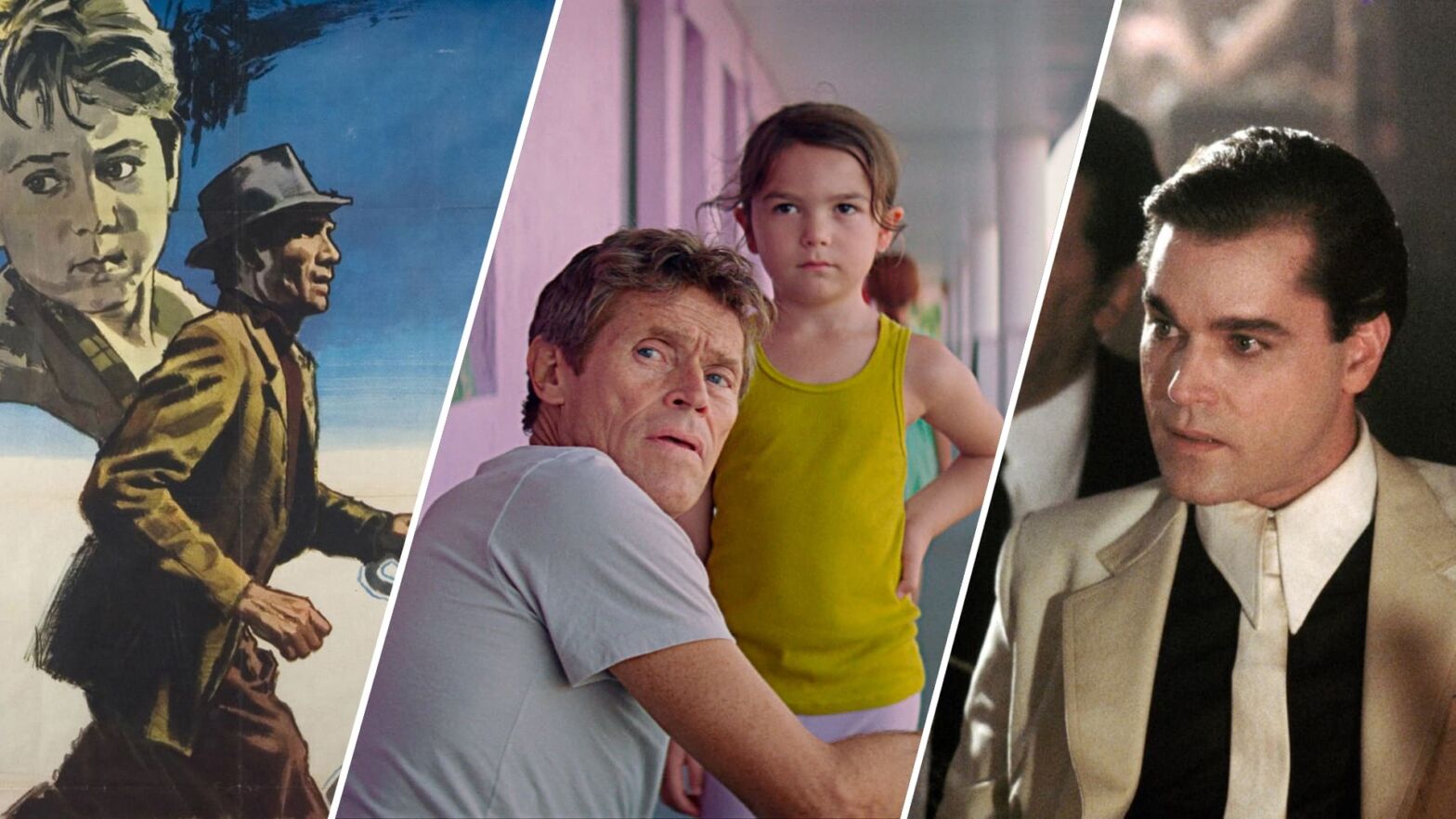Film has the unique ability to transport us to another place and time completely, if only for a few hours. But the way films do this can vary. Scale, spectacle, and grandiose VFX can allow us to escape into other worlds. But naturalist movies transport us by blurring the lines between film and reality. It attempts to make the brush strokes behind the creation of a film invisible so that we may experience the film as authentically as we experience reality. In this article, we’ll define naturalism and examine its role in cinema.
Naturalism explained
Naturalism in film explained
Odds are, you have seen naturalist movies without even knowing it. Before we dive into how filmmakers achieve it, let’s first gather an understanding of what naturalism is.
NATURALISM DEFINITION
What is naturalism?
Naturalism in film refers to an attempt to create a believable illusion representative of reality. It strives to make filmmaking techniques and devices invisible to the audience as to reflect real life unfolding in the film. Naturalism derives from its initial movement in theatre in which artists and playwrights adopted scientific theory into how they wrote stories and characters. For example, the hypothesis of a story could be how a specific character would behave in a specific situation. The story would follow this hypothesis as if it were life itself unfolding.
Characteristics of Naturalist Movies:
- Non-professional actors
- Improvisation
- Auteur directors
Naturalism explained
A history of naturalist movies
Before it was adopted by filmmakers, naturalism came about in the late 19th century, early 20th century among European dramatists and playwrights. It began when writers dug deeper into characters and stories and analyzed the forces that influence both that the audience may not see.
This approach was heavily influenced by Charles Darwin’s theory of evolution. Writers began to understand the influence that environment and heredity have on a person in reality. They then began adopting this into fictional characters and stories.
Naturalism explained
Overtime, naturalist work naturally made its way into the medium of film. Naturalist movies can be found in some of the most influential movements in cinema such as The French New Wave and Italian Neorealism. Many early films include naturalist qualities such as improvisation, non-professional actors, and auteur sensibilities.
Related Posts
Naturalism in film
Auteurs working in naturalist movies
There are many moving parts to naturalist movies. From screenwriting, to performances, to cinematography. Ensuring that all of these components push toward naturalist work often requires the oversight of an auteur director.
In fact, François Truffaut, renowned French director who moved the auteur theory forward, created one of the earliest and most brilliant works of naturalist movies is The 400 Blows (1959).
His handle on the role naturalism plays in the film’s story has inspired auteur filmmakers to this day. The film demonstrates the necessity of creative control as well as the director’s role in representing reality through film by any means necessary. For example, Truffaut had actor Jean-Pierre Léaud improvise this entire scene to lend itself to the film's naturalist characteristics.
Naturalism examples • The 400 Blows
Truffaut also derives much of the film’s story from his own life, another naturalist characteristic that allows a film to better reflect and represent reality. Much of the character of Antoine was based off of Truffaut himself. This is where casting becomes crucial to naturalist movies.
naturalism & performance
Casting is critical
As is the case in any film, casting is critical. However, casting becomes all the more critical when striving to create naturalist movies. The performance of an actor must become invisible to best portray the reality of a character’s life. To achieve this, many directors often cast non-professional actors.
They do this to cast people that do not act, but rather play themselves within the context of a story.

“If you’re telling your story with naturalism, it lives or dies by the actors, so the acting seems invisible.”
— Tom McCarthy, dir. The Station Agent (2003)
Although utilizing non-professional actors is becoming more common in modern cinema, it is not new to the medium. In the film deemed by Martin Scorsese as the pinnacle of Italian Neorealism, Vittorio De Sica’s The Bicycle Thief (1948) stars a cast of mostly non-professional actors.
More recently, Sean Baker’s The Florida Project (2017) stars only one professional actor — Willem Dafoe. The film follows a young mother and her daughter who live in a motel among the margins of society, on the brink of homelessness.
Baker discovered child actor Valeria Cotto, who plays Jancey, at a Target. Christopher Rivera, who plays Scooty, was an 8-year-old living at the Paradise Inn motel in Kissimmee, Florida, with his mother when crew members spotted him; a lifestyle nearly identical to the plot of the film.
Baker also found Bria Vinaite, who plays Halley, via Instagram and messaged her after she realized she would be the most authentic person to play the role. Vinaite talks about the experience as surreal in the interview below.
Naturalism examples • 'Florida Project'
In fact, producers of the film wanted a star like Miley Cyrus or Britney Spears to play the role of Halley. But Baker thought that a millionaire playing the part would be unauthentic and take away from the naturalist characteristics of the film. He couldn’t have been more accurate.
The use of non-professional actors has led to critics praising the film for its authenticity in portraying the marginalized groups of America. Much of the actions and dialogue between the kids of the film were improvised, another key naturalist characteristic.
how to achieve naturalism in movies?
Improvisation & naturalism
Improvisation has resulted in some of the most authentic and naturalistic scenes in cinema. It has allowed actors not to act, but react and behave as a human being to the situation unfolding before them in real time.
For example, Martin Scorsese’s directing style in his early work has numerous examples of naturalist movies. Why does Scorsese love and use improvisation so much? This video by The Gaze analyzes some great naturalism examples, the roots of Scorsese’s style and how it lends itself to naturalist movies.
Naturalism examples • Scorsese and Improvisation
Nearly every one of Scorsese’s best films contain iconic moments of improvisation. From DeNiro’s “You talkin’ to me?” in Taxi Driver to Joe Pesci’s “Funny how?” scene from Goodfellas, you may be surprised to learn that some of your favorite movie lines are a product of improvisation as an attempt to achieve naturalism in film.
Related Posts
the importance of naturalism
What naturalism achieves
Some may look at these characteristics and think that it must complicate or lengthen the production process. While this may be true, it can achieve through film often justifies the arduous means to achieving it.
There is a duality to cinema that has prevailed over time. There are both the films that allow us to escape our own reality and there are films that cause us to look more deeply into our own reality. Naturalist movies achieve the latter.
Films like The Florida Project that function on naturalist qualities resonate deeply because of what they try to achieve. Nerdwriter1 breaks down these effects of the technique in the film in the video essay below and why films like The Florida Project are important to cinema.
Naturalism examples • The Florida Project
While it may not be everyone’s cup of tea, there will always be a place for naturalism in cinema not only for audiences, but also for filmmakers attempting to tell personal and authentic stories.
Although naturalistic films may not always be given the attention or respect they deserve, the audiences and filmmakers it does resonate with will be the ones to perpetuate it into the future.
UP NEXT
Exploring Italian Neorealism in Film
One of the most influential movements in cinema is Italian Neorealism. It’s impact can be found both throughout cinematic history and modern films alike. Learn more about Italian Neorealism in the next article and find out how it influenced some of today's most prominent filmmakers.
Up Next: Italian Neorealism Explained →
Showcase your vision with elegant shot lists and storyboards.
Create robust and customizable shot lists. Upload images to make storyboards and slideshows.
